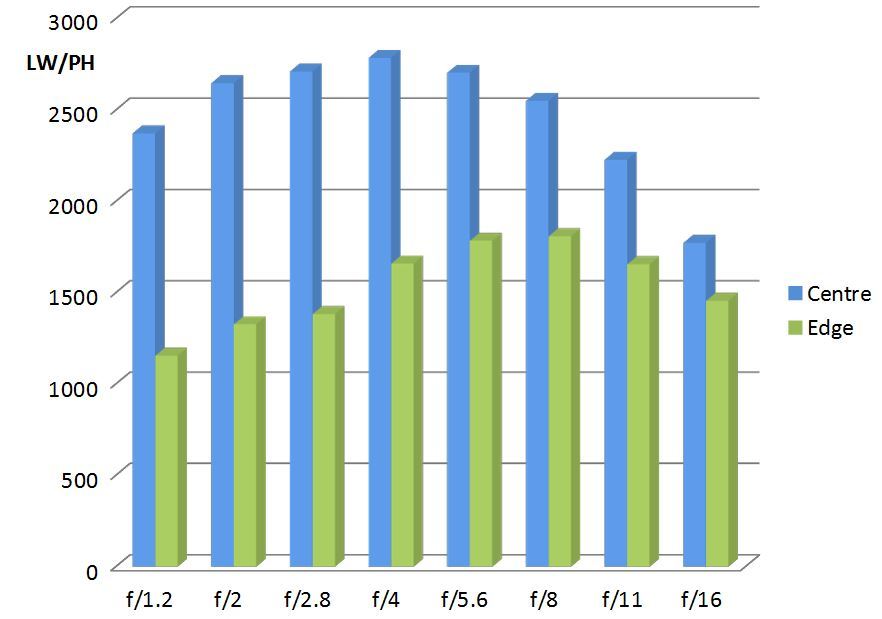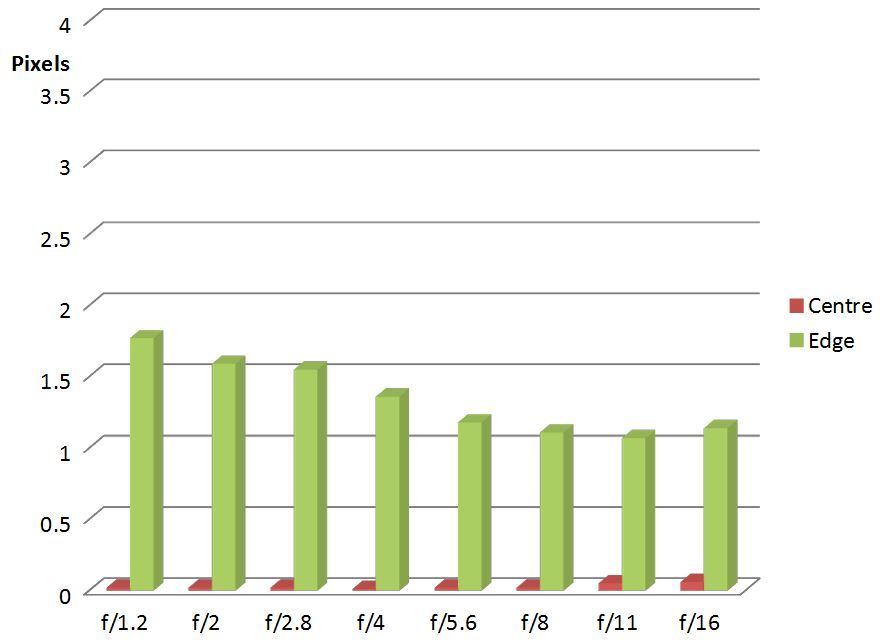Olympus M.Zuiko 25mm f/1.2 PRO Lens Review
Olympus M.Zuiko 25mm f/1.2 PRO Performance
Sharpness measurements probably do not do the lens full justice as the images shot at normal distances are very sharp, centre and edge. Generally, an f/1.2 lens such as this would not be expected to perform as well up close and on flat subjects such as lens testing charts.
Despite the above, at the centre sharpness is excellent from the f/1.2 open aperture and remains so right through to f/11. At f2, f/2.8 and f/4 it is pushing towards being described as outstanding. It is only at f/16 that diffraction takes its toll, but even here results are very good.
The edges do not fare quite so well in the test results, being fair at f/1.2, good at f/2 and f/2.8, but rising to very good sharpness between f/4 and f/11. It is still good at f/16 as it tails off due to diffraction.
In the field, the normal distance images show excellent sharpness centre and edge. This is a lens for real life shooting, not for fitting to extension tubes and other close up work. This is just the nature of the beast and probably inevitable in such a fast, bright lens.
How to read our MTF chartsThe blue column represents readings from the centre of the picture frame at the various apertures and the green is from the edges.The scale on the left side is an indication of actual image resolution as LW/PH and is described in detail above. The taller the column, the better the lens performance. For this review, the lens was tested on a Panasonic Lumix G6 using Imatest. |
CA (Chromatic Aberration) is very highly corrected in the centre of the field and is virtually zero. At the edges control is still very good and for most purposes good enough not to be noticed. There will be times, such as branches against bright sky, where some fringing becomes visible, but this can easily be corrected in software.
How to read our CA chartsChromatic aberration (CA) is the lens' inability to focus on the sensor or film all colours of visible light at the same point. Severe chromatic aberration gives a noticeable fringing or a halo effect around sharp edges within the picture. It can be cured in software.Apochromatic lenses have special lens elements (aspheric, extra-low dispersion etc) to minimise the problem, hence they usually cost more. For this review, the lens was tested on a Panasonic Lumix G6 using Imatest. |
Flare resistance is virtually perfect and it is not possible to even see any significant loss of contrast against the light.
Barrel distortion would be expected for an f/1.2 standard lens, and is present, but measures as a very low value of -0.312%. This is not significant, but in extreme circumstances could be corrected in software anyway.
The 9 bladed rounded diaphragm, coupled with the wide, bright apertures available, offers the potential for some wonderfully smooth bokeh, and that is exactly what is delivered. The overall “look” of the lens is very impressive.
Value For Money
The Olympus M.Zuiko Digital 25mm f/1.2 PRO Lens is priced at £1099.
For MFT, there are various 25mm f/0.95 manual focus lenses. Choices included the Meike 25mm f/0.95 (£455), the Voigtlander 25mm f/0.95 II (£742) and the SLR-Magic 25mm T0.95 Cine lens (£579).
To put the DSLR marques in context, Nikon has the MF 50mm f/1.2 AIS (£699) and Canon offer the 50mm f/1.2L USM (£1369).
It seems that adding AF to the 25mm f/1.2 adds quite a bit to the price, but considering the complexity of the lens construction and the quality of the results, it remains fairly pitched and good VFM. For more options have a look at the Top 33 Best Micro Four Thirds Lenses.
Add your message
Please login here or if you've not registered, you can register here. Registering is safe, quick and free.
photodo Stats
428 MTF tests
74 in-depth photodo reviews
100+ users join each day
Help the lens community by reviewing or rating a lens today via our lens search
Latest Lens Reviews
- Chinon 28mm f/2.8 Vintage Lens Review
- Canon EF 70-200mm f/4L IS II USM Lens Review
- Samyang AF 85mm f/1.4 EF Review
- Sigma 70mm f/2.8 DG Macro Art Review
- Samyang AF 24mm f/2.8 FE Review
- Meike 50mm f/1.7 Review
- Tamron 70-210mm f/4 Di VC USD Review
- Lensbaby Burnside 35mm f/2.8 Review
- Asahi Super Takumar 50mm f/1.4 Review
- Asahi Super-Multi-Coated Takumar 135mm f/3.5 Review


